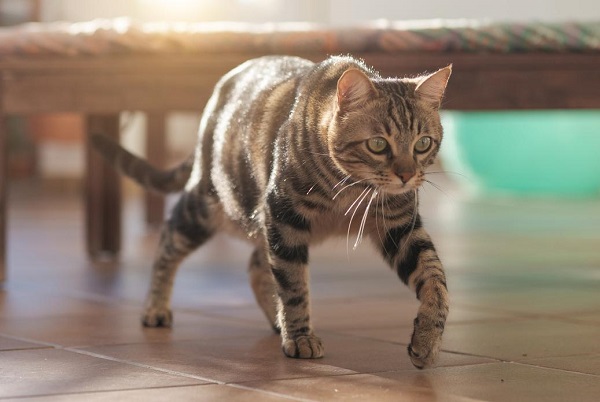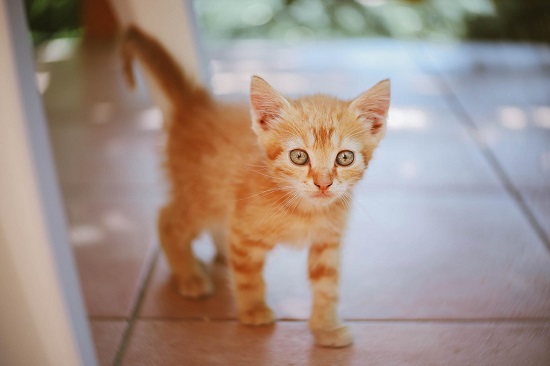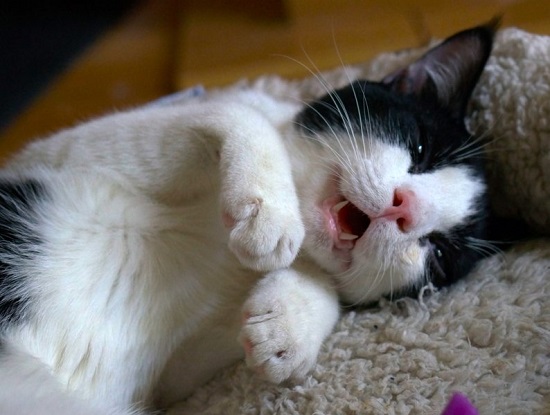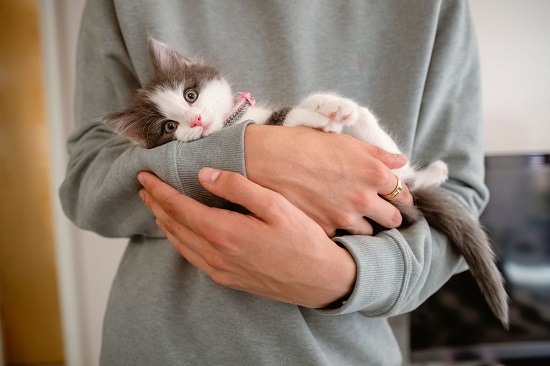Do you know what is cerebellar hypoplasia in cats? You might have come across a lot of viral wobbly cat videos in which cats have jerked out while running or just fallen down while walking on a ramp.
I’m sure we’ve all burst out laughing while watching such viral videos. But, do you know this is not just a funny video or meme. This is a disorder and severe problem in cats that can’t be cured if the disorder is immense.
This is called cerebellar hypoplasia in cats. It can be caused by trauma or a virus. It affects the main portion of the brain cell.

What Is Feline Cerebellar Hypoplasia?
As per PetMD, “Cerebellar hypoplasia is a condition where a kitten’s brain does not finish growing and remains in an immature state due to a viral infection in the mother cat.“[1]
Feline cerebellar hypoplasia also called bobblehead is a health condition that lacks brain development. The cerebellum is the part of the brain cerebellum that is responsible for motor skills, it helps them to create balance and coordinate movement which doesn’t function well. It is not contagious.
When the kitten is inside the mother cat’s womb her brain is not developed properly. So in general, the brain of the cat fails to develop properly.
Is It Wobbly Cat Syndrome?
Cerebellar hypoplasia is widely called as wobbly cat syndrome is also known as CH. It is a disorder, the central nervous system of the cat is affected due to abrupt jerky movements, disorganized motion, and loss of balance.

In general, the brain is not developed appropriately and thus cats fail to do basic things properly. Like they won’t be able to walk, run or chase. Fail to climb and will face problems eating food from her bowl, etc.
What Are the Cause of Cerebellar Hypoplasia in Cats?
CH occurs in cats through the feline panleukopenia virus or through trauma. It is generally a genetic problem in other animals but in the case of cats, it is not true.
Well, when a mother cat gets infected with this virus she can pass the problem to her one or multiple newborn kittens. She can be hit by this if she is malnutrition during pregnancy, or if she comes in touch with parvovirus during that.
The virus targets the cells of the body of a cat. That keeps multiplying at a huge pace. During the birth of the kitten and after a week their brains start developing and if they are attacked by this virus kittens’ condition will become vulnerable.
Symptoms of Cerebellar Hypoplasia
It hits kitten in 3 levels. The first one is the initial mild level, the second is medium, and the third one is a serious extreme condition.

They will show signs as per the level.
In the mild stage: They will require minimal care. They may occasionally fall down while walking, may face a low degree of tremor when they get scared.
In the second stage: You need to take care of them a little extra. Because if they get anxious they can face heavy tremors, may lose balance while walking more, and can face problems while standing. They will not jump and will use nails for climbing.
The last stage: It is an extremely serious condition. You have to rigidly take care of them. They will face continuous tremors, will fail to stand or walk, and will tremble while walking. You have to help them by feeding them good food and water.
Also, they will fail to use the litter boxes. Wobbly cats will face safety issues at every stage due to weak motor skills and coordination.
| CH Symptoms |
|---|
| A problem in jumping elevated places |
| Tremors in neck and head |
| A problem with walking and running |
| Leg shaking |
| She will fail to stand |
Can You Treat Cerebellar Hypoplasia in Cats?
Cerebellar hypoplasia is a neurological disorder and not a disease that can be treated with medicines and tests. It can’t be cured with any treatment because it is due to the absence of growth in the brain.
Although we can’t treat it, we can obviously make it less painful and can control the situation.
For the general treatment, your veterinarian may diagnose her by noting down her symptoms and prescribing medicines according to her condition. He may also give you guidelines on how to handle and take care of her.
Now, if the condition is serious it may require advanced treatment.
So, if you take your cerebellar cat to the vet he will attempt blood and clinical urine tests it will evaluate is she affected with metabolic syndrome or is there any organ failure, and check her RCB, WBC, and platelets.
Later, he may ask you to go to specialist of nerves. And, the neurologist will conduct a CT scan or MRI of the brain that will show that she has smaller than normal cerebellum.
MRI may show all the abnormalities inside her brain including cerebellar hypoplasia.
What Are the Preventive Measures of CH in Cats?
The one way to prevent the growth of cerebellar hypoplasia in cats is to go for surgical sterilization. That means you have to take her for spaying and neutering.

By removing the uterus, ovaries, and testicles from male and female cats will stop the population of cerebellar hypoplasia cats.
Another way is vaccination!
You have to give your female cat vaccine for the feline panleukopenia virus. But, a pregnant cat should not be vaccinated. Also, when she is feeding a kitten of 2 weeks old that time also you must avoid the vaccination.
Well, you can vaccinate them when kittens turn into 4-6 week old cats. Male cats can also have the vaccine.
After Care of Cats With Cerebellar Hypoplasia
As they can lose their balance and coordination it is best that you keep a hypoplasia cat indoors. It will decrease the growing number of accidents. Use ramps for them, it will help them to access the bed or litter box.
Try to don’t let them climb at an elevated place as they can lose their balance and can fall easily.
Keep a mat under their food bowl this is because it helps them to create traction. You can also purchase wide water and a food bowl, so they can easily use that without losing their control.
Use baby gates to prohibit accidental falls. Also, you should not declaw them as they depend on their toe’s tip for balancing themselves. So, let their nail remain a bit longer than normal cats.
Don’t leave them for long, and if possible keep them away from other cats. In case, she gets along with them make sure to keep an eye because they are vulnerable and if they fight she will get hurt a lot. Also, keep them away from dogs and other animals too!
You can buy a big litter box that doesn’t have high sides so that they can go inside that with ease. And lastly, make sure that your cat doesn’t have to use the stairs of the house.
What Is the Life Cycle of Cerebellar Hypoplasia Cats?
As this is a non-progressive problem neither it will get better over time nor it will get worse. But they are generally affected by this entire their life.
However, if you take care of her properly and give her care, love, and pay attention to her, she can cope. In fact, they can live the same life duration as normal cats.
So, they have a good chance of living a quality life.
And, they can have normal lives but only when taken care of properly.
Well, That’s a Wrap!
Cerebellar hypoplasia in cats is a neurological disorder that stops controlling motor impulses. It hits the brain of the cat and can be caused by trauma or the feline panleukopenia virus.
It is noncontagious. But the life of a wobbly cat is more difficult than a general cat they need extra and proper care. If the mother is affected the utero can pass to her unborn baby too.
The only way to prevent this is either vaccine or they ought to be spayed or neutered. Do you want to know more about this? Then read the entire article and also do share it with other cat owners too!
References
- Betbeze, S. (2022, February 11). Cerebellar hypoplasia in cats. PetMD. Retrieved September 5, 2022
- Cat health symptoms a to z. (n.d.). Pet WebMD. Retrieved September 5, 2022
- Evidence of parvovirus replication in cerebral neurons of cats. (n.d.). Journal of Clinical Microbiology. Retrieved September 5, 2022


